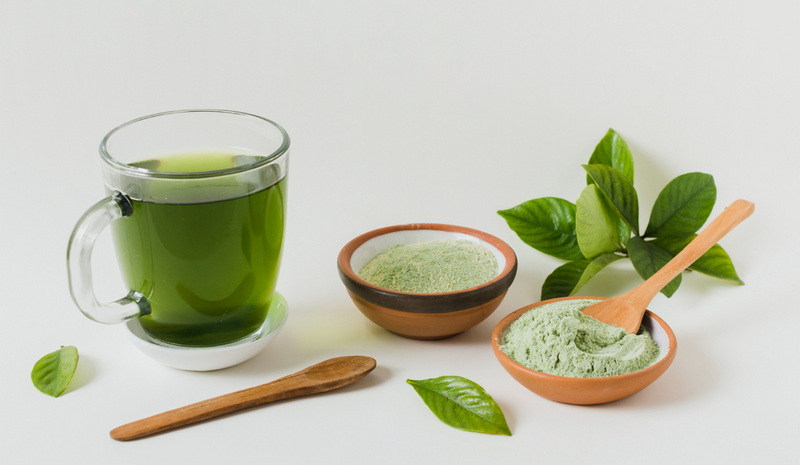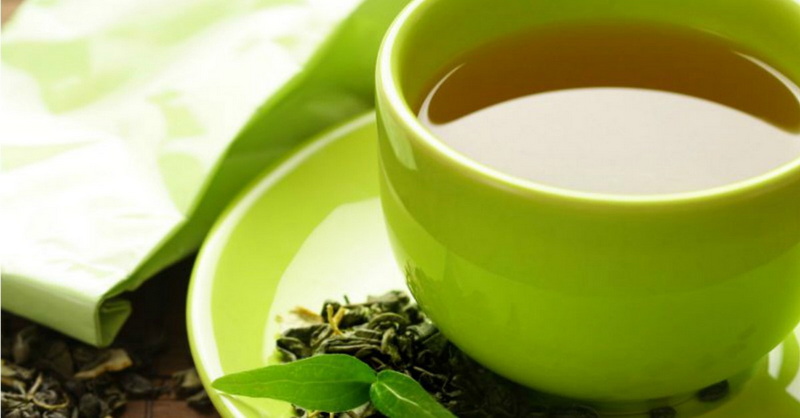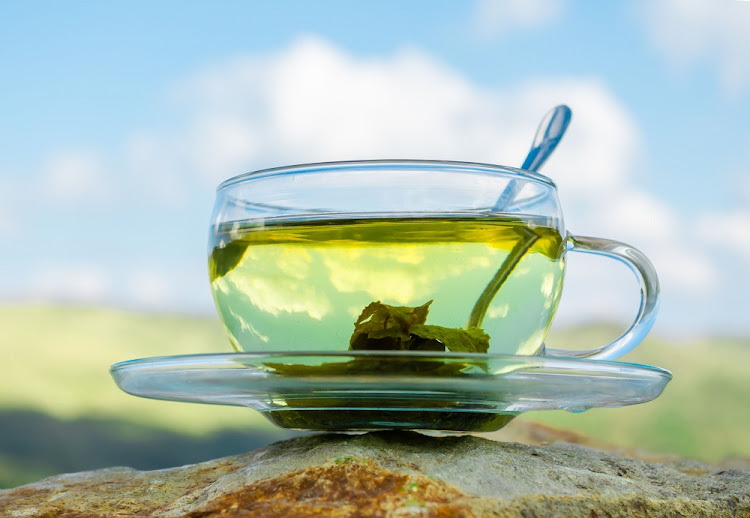Content Menu
● What is Matcha?
>> Nutritional Profile of Matcha
● What is Green Tea?
>> Nutritional Profile of Green Tea
● Key Differences Between Matcha and Green Tea
● Introduction to Green Tea Extract
● How is Green Tea Extract Made?
● Nutritional Profile of Green Tea Extract
● How Green Tea Extract Differs from Matcha and Green Tea
● Health Benefits of Green Tea Extract
● Potential Side Effects and Precautions
● How to Prepare Matcha (Detailed)
● How to Prepare Green Tea (Detailed)
● Conclusion
● FAQ
>> 1. Is matcha stronger than green tea?
>> 2. Can I use green tea instead of matcha?
>> 3. How much caffeine is in matcha compared to green tea?
>> 4. Is there any difference in taste between matcha and green tea?
>> 5. Can I make lattes with both matcha and green tea?
● Citations:
Matcha and green tea are often discussed in the same breath, leading many to wonder if they are essentially the same product. Both originate from the Camellia sinensis plant and share similar health benefits, but they differ significantly in their processing, flavor profiles, and nutrient concentrations. This article explores these differences in detail, helping you understand whether matcha and green tea extract are indeed the same thing. We'll delve into what distinguishes matcha from regular green tea and then introduce green tea extract, a potent supplement derived from green tea.

What is Matcha?
Matcha is a type of powdered green tea that is made from specially grown tea leaves. These leaves are shaded for several weeks before harvest, increasing their chlorophyll content and enhancing their flavor profile. This shading process also boosts the levels of L-theanine, an amino acid known for its calming effects and its ability to promote focus and concentration. After harvesting, the leaves are steamed, dried, and ground into a fine powder. This unique process allows you to consume the entire leaf, providing a higher concentration of nutrients compared to traditional green tea. Consuming the entire leaf sets matcha apart, maximizing the intake of beneficial compounds.
Nutritional Profile of Matcha
- Antioxidants: Matcha contains significantly higher levels of antioxidants than regular green tea. It is particularly rich in catechins, especially epigallocatechin gallate (EGCG), known for its health benefits, including anti-inflammatory and anti-cancer properties. EGCG constitutes a major reason for matcha's health reputation.
- Caffeine: Matcha has a higher caffeine content than standard green tea due to the whole leaf consumption. A typical serving can contain about 70 mg of caffeine. This caffeine is released slowly due to the presence of L-theanine, preventing the jitters often associated with coffee.
- L-Theanine: This amino acid found in matcha promotes relaxation without drowsiness, balancing the stimulating effects of caffeine. L-theanine works synergistically with caffeine to enhance cognitive performance and reduce stress.
What is Green Tea?
Green tea, on the other hand, is made from unoxidized leaves that are quickly steamed or pan-fired after harvest to preserve their green color and fresh flavor. The leaves are then dried and can be consumed as loose leaf or in tea bags. Unlike matcha, when brewing green tea, the leaves are steeped in hot water and then discarded, which means you do not consume the leaves themselves. This steeping process extracts the flavors and some of the nutrients, but it doesn't provide the full range of benefits that come from consuming the entire leaf.
Nutritional Profile of Green Tea
- Antioxidants: While still rich in antioxidants, green tea generally has lower concentrations than matcha. It contains various catechins but in lesser amounts. The antioxidant levels vary depending on the quality of the tea leaves and the brewing method.
- Caffeine: A typical cup of green tea contains about 30-50 mg of caffeine. The caffeine content can also vary based on steeping time; longer steeping times generally result in higher caffeine levels.
- L-Theanine: Green tea also contains L-theanine but in smaller amounts compared to matcha. The presence of L-theanine contributes to the calming effects of green tea.
Key Differences Between Matcha and Green Tea
| Feature | Matcha | Green Tea |
| Form | Powdered | Loose leaf or bagged |
| Consumption | Whole leaf (entire leaf consumed) | Infusion (leaves discarded) |
| Caffeine Content | Higher (70 mg per serving) | Lower (30-50 mg per serving) |
| Antioxidant Levels | Higher (3 times more than green tea) | Lower |
| Flavor Profile | Rich, umami flavor | Light, grassy flavor |
| Preparation Method | Whisked into water | Steeped in hot water |
Introduction to Green Tea Extract
Green tea extract is a concentrated form of green tea. It is derived from green tea leaves and contains a high concentration of antioxidants, primarily catechins, with EGCG being the most prominent. This extract is available in various forms, including capsules, powders, and liquids, and is often used as a dietary supplement to harness the health benefits of green tea in a more potent form.

How is Green Tea Extract Made?
The extraction process typically involves several steps:
1. Harvesting: Green tea leaves are harvested from the *Camellia sinensis* plant.
2. Extraction: The leaves are processed using solvents (like ethanol or water) to extract the active compounds, primarily catechins.
3. Concentration: The extract is then concentrated to increase the potency of the beneficial compounds.
4. Purification: The concentrated extract is purified to remove any unwanted substances and to isolate the desired catechins, especially EGCG.
5. Drying: Finally, the extract is dried to create a powder or processed into liquid or capsule form.
Nutritional Profile of Green Tea Extract
- Antioxidants: Green tea extract is exceptionally rich in antioxidants, with a high concentration of catechins, particularly EGCG. The concentration of EGCG is often standardized in supplements to ensure consistent potency.
- Caffeine: Depending on the specific extract, it may contain varying amounts of caffeine. Some extracts are decaffeinated to cater to individuals sensitive to caffeine.
- Other Compounds: Besides catechins and caffeine, green tea extract may contain other beneficial compounds like flavonoids and amino acids.
How Green Tea Extract Differs from Matcha and Green Tea
| Feature | Matcha | Green Tea | Green Tea Extract |
| Form | Powdered | Loose leaf or bagged | Concentrated extract (capsules, powder) |
| Consumption | Whole leaf (entire leaf consumed) | Infusion (leaves discarded) | Supplement form |
| Caffeine Content | Higher (70 mg per serving) | Lower (30-50 mg per serving) | Varies (can be decaffeinated) |
| Antioxidant Levels | High (3 times more than green tea) | Lower | Very High (Concentrated) |
| Flavor Profile | Rich, umami flavor | Light, grassy flavor | Not applicable (usually tasteless) |
| Use | Beverage, culinary ingredient | Beverage | Dietary supplement |
Health Benefits of Green Tea Extract
Green tea extract offers a range of potential health benefits, primarily attributed to its high antioxidant content:
1. Weight Management: Green tea extract may aid in weight loss by boosting metabolism and increasing fat oxidation. Studies suggest that EGCG can enhance thermogenesis, leading to increased calorie burning.
2. Heart Health: Regular consumption of green tea extract may help lower cholesterol levels, reduce blood pressure, and improve overall cardiovascular health. The antioxidants in green tea can prevent the oxidation of LDL cholesterol, reducing the risk of heart disease.
3. Brain Function: The combination of caffeine and L-theanine in green tea extract may enhance cognitive function, improve alertness, and boost memory. L-theanine promotes relaxation without drowsiness, allowing for a calm and focused state of mind.
4. Cancer Prevention: The potent antioxidants in green tea extract may help protect against various types of cancer by neutralizing free radicals and preventing DNA damage. EGCG has been shown to inhibit the growth of cancer cells in laboratory studies.
5. Skin Health: Green tea extract may improve skin health by protecting against UV damage, reducing inflammation, and promoting collagen production. It is often used in skincare products for its anti-aging and skin-soothing properties.

Potential Side Effects and Precautions
While green tea extract is generally considered safe, it's essential to be aware of potential side effects and take necessary precautions:
- Caffeine Sensitivity: Individuals sensitive to caffeine may experience side effects such as insomnia, anxiety, and increased heart rate. Opting for decaffeinated green tea extract can mitigate these effects.
- Liver Issues: In rare cases, high doses of green tea extract have been linked to liver problems. It's important to adhere to recommended dosages and consult with a healthcare professional, especially if you have pre-existing liver conditions.
- Drug Interactions: Green tea extract may interact with certain medications, such as blood thinners and chemotherapy drugs. It's crucial to inform your doctor about any supplements you are taking.
- Digestive Issues: Some people may experience digestive discomfort, such as nausea or stomach upset, when taking green tea extract. Taking the extract with food can help reduce these symptoms.
- Dosage: It is essential to follow the recommended dosage guidelines provided by the manufacturer or a healthcare professional. High doses do not necessarily mean increased benefits and can potentially lead to adverse effects.
How to Prepare Matcha (Detailed)
Preparing matcha involves a traditional method that enhances its flavor and texture. Here's a more detailed guide:
1. Gather Your Supplies:
- Matcha Powder: High-quality matcha powder is essential for the best flavor.
- Hot Water: The water should be hot but not boiling (around 175°F or 80°C). Boiling water can scorch the matcha and make it taste bitter.
- Chawan (Tea Bowl): A traditional tea bowl is ideal, but any small bowl will work.
- Chasen (Bamboo Whisk): A bamboo whisk is specifically designed for whisking matcha and creating a frothy texture.
- Chashaku (Tea Scoop): A tea scoop is used to measure the matcha powder accurately.
2. Sift the Matcha:
- Sifting the matcha powder is crucial to remove any clumps, ensuring a smooth and even consistency. Use a small sifter or fine-mesh strainer to sift the powder into the tea bowl.
3. Add Hot Water:
- Pour about 2 ounces (60 ml) of hot water into the tea bowl.
4. Whisk the Matcha:
- Using the bamboo whisk, start by gently mixing the matcha powder and water in a circular motion to break up any remaining clumps.
- Then, whisk vigorously in a zig-zag or “W” motion across the surface of the water, creating a frothy layer on top. The goal is to incorporate air into the mixture and create a smooth, creamy texture.
- Continue whisking for about 20-30 seconds until a fine foam forms on top of the matcha.
5. Enjoy Your Matcha:
- Once the matcha is whisked to a smooth and frothy consistency, you can enjoy it straight from the bowl. Sip slowly and savor the unique flavor and aroma of the matcha.
- Alternatively, you can add milk or a non-dairy alternative to create a matcha latte. Sweeten with honey, maple syrup, or your preferred sweetener to taste.
How to Prepare Green Tea (Detailed)
Preparing green tea is a simple process, but attention to detail can enhance its flavor and aroma. Here's a detailed guide:
1. Gather Your Supplies:
- Green Tea Leaves: Choose high-quality loose leaf green tea or tea bags.
- Hot Water: The water temperature is critical for green tea. It should be hot but not boiling (around 175°F or 80°C).
- Tea Kettle: Use a tea kettle to heat the water to the correct temperature.
- Teapot or Cup: A teapot with a strainer is ideal for brewing loose leaf tea, but a cup with a tea infuser works just as well.
2. Heat the Water:
- Heat the water to around 175°F (80°C). If you don't have a thermometer, you can let the boiling water cool for a few minutes before pouring it over the tea leaves.
3. Add Tea Leaves:
- Place 1 teaspoon of loose leaf green tea or 1 tea bag into the teapot or cup.
4. Pour Hot Water:
- Pour 8 ounces (240 ml) of hot water over the tea leaves.
5. Steep the Tea:
- Steep the tea for 2-3 minutes. Steeping for too long can make the tea bitter, while not steeping long enough will result in a weak flavor.
6. Remove Tea Leaves:
- After steeping, remove the tea leaves or tea bag from the teapot or cup to prevent over-extraction.
7. Enjoy Your Green Tea:
- Pour the tea into a cup and enjoy it hot. You can add lemon, honey, or other flavorings to taste, but many prefer to drink it plain to savor the natural flavor of the green tea.
Conclusion
In summary, while matcha, green tea, and green tea extract all originate from the same plant, they are distinctly different products with unique preparation methods, nutritional profiles, and uses. Matcha provides a more concentrated source of nutrients due to its powdered form and whole-leaf consumption, making it a popular choice among health enthusiasts. Green tea offers a milder experience, perfect for a relaxing beverage. Green tea extract provides a concentrated dose of beneficial compounds, ideal for those seeking specific health benefits. Understanding these differences can help you make informed choices about which product best suits your needs and preferences.

FAQ
1. Is matcha stronger than green tea?
Yes, matcha typically contains more caffeine and antioxidants than regular green tea due to its whole-leaf consumption. This leads to a more potent effect on energy levels and overall health.
2. Can I use green tea instead of matcha?
While you can use green tea as an alternative for certain recipes, it won't provide the same flavor or nutritional benefits as matcha. The unique umami flavor and higher antioxidant content of matcha make it a distinct ingredient.
3. How much caffeine is in matcha compared to green tea?
Matcha contains about 70 mg of caffeine per serving, while green tea has approximately 30-50 mg per serving. This difference is due to the fact that you consume the entire leaf with matcha, whereas green tea is steeped and the leaves are discarded.
4. Is there any difference in taste between matcha and green tea?
Yes, matcha has a rich umami flavor with slightly sweet and vegetal notes, while green tea has a lighter, grassy taste. The flavor difference is due to the shading of matcha leaves before harvest and the different processing methods.
5. Can I make lattes with both matcha and green tea?
Yes, both can be used to create delicious lattes; however, they will have different flavors due to their distinct profiles. Matcha lattes have a more pronounced and creamy flavor, while green tea lattes are milder and more refreshing.
Citations:
[1] https://sipspa.com.au/blogs/articles/whats-the-difference-between-matcha-and-green-tea
[2] https://aromamatcha.fr/en/blogs/blog-du-matcha/matcha-the-vert-difference
[3] https://www.medicalnewstoday.com/articles/matcha-vs-green-tea
[4] https://pmc.ncbi.nlm.nih.gov/articles/PMC7796401/
[5] https://www.republicoftea.com/blog/tea-library/matcha-vs-green-tea-what-is-the-difference/tl-036/
[6] https://www.healthline.com/nutrition/7-benefits-of-matcha-tea
[7] https://www.agrojournal.org/26/06-28.pdf
[8] https://www.artoftea.com/blogs/tea-profiles/what-is-the-difference-between-matcha-and-green-tea
[9] https://www.healthline.com/nutrition/matcha-green-tea
[10] https://matcha.com/blogs/news/learn-about-matcha-green-tea-powder-and-other-powdered-green-tea

 English
English 





























